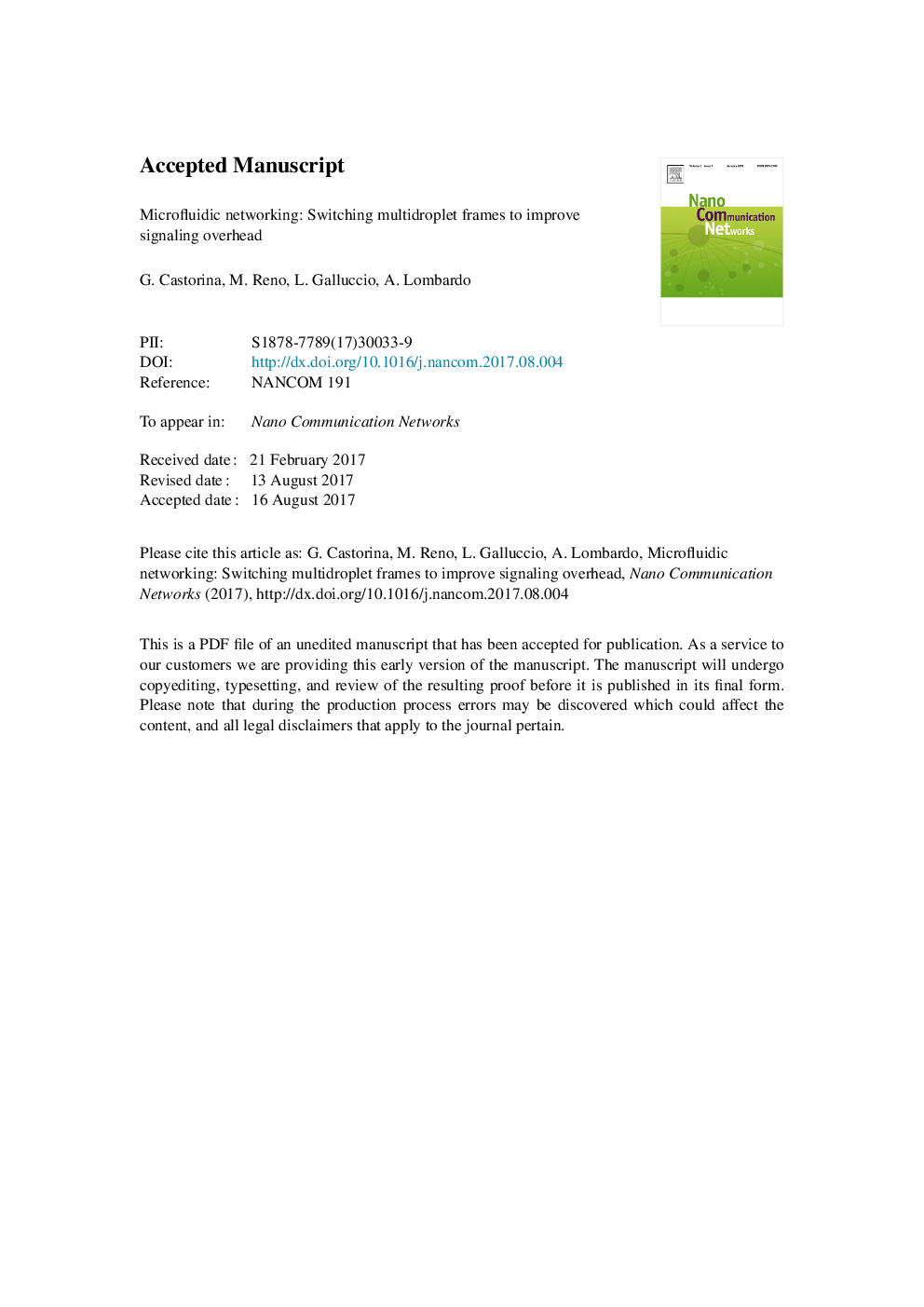| Article ID | Journal | Published Year | Pages | File Type |
|---|---|---|---|---|
| 6886050 | Nano Communication Networks | 2017 | 35 Pages |
Abstract
Microfluidic networking is an emerging research field for the numerous applications it allows in the field of biomedicine. Previous literature has shown that it is indeed possible to develop purely hydrodynamic microfluidic networks by using a droplet logic. However, while the design of switches and medium access control devices is possible, up to date communications have been proposed by exploiting only pairs of droplets - a header and a payload - thus leading to single droplet frames which cause an overhead of 50%; this makes current solutions scarcely applicable to real systems. In this paper we overcome this limitation by designing and validating a microfluidic switch which employs multidroplet frames, thus significantly improving the overhead and making networking applications feasible. Simulation results carried out with the OpenFOAM software assess the effectiveness of the solution and give an overview of the maximum achievable throughput. Moreover we find out upper and lower bounds for the design of the droplets distance in each frame in such a way to define the functioning regions for the switch device.
Keywords
Related Topics
Physical Sciences and Engineering
Computer Science
Computer Networks and Communications
Authors
G. Castorina, M. Reno, L. Galluccio, A. Lombardo,
